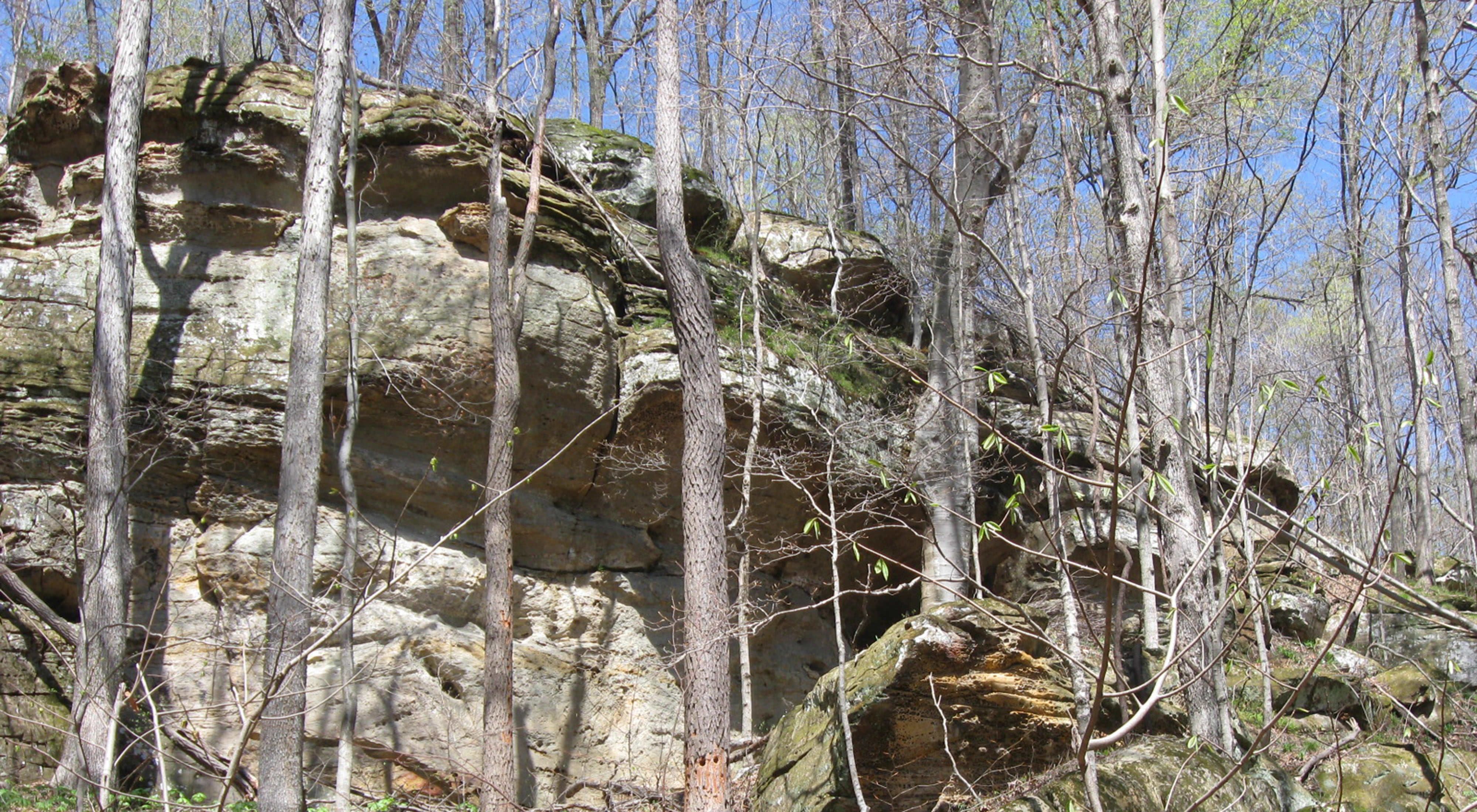Description
In 2010, the Conservancy began discussions to purchase and permanently protect a small cave and situated along Patoka Lake in Crawford County. The landowners had begun creating the nature preserve by purchasing subdivision lots around the cave to buffer it from disturbance. Due to the number of small lots being pieced back together, it took the Conservancy over two years to complete the acquisition in November 2012. Our patience paid off as this new 26-acre lot boasts dramatic limestone outcrops, the delicate filmy fern, and a small cave tucked in between a limestone and sandstone crevice, called Megenity Peccary Cave.
Indiana State Endangered filmy fern and rare French’s shooting star can be found growing at the preserve. The cave has several notable creatures, a cave-adapted springtail insect and Reynold’s cave millipede, both lacking eyes and pigmentation and rare worldwide. The Conservancy’s interest in this site is not only for protecting the living plants and animals found there but also for the creatures of long ago. It is these creatures that make this cave really interesting and has led to a new partnership with the Indiana State Museum and Historic Sites.
Since 1987, the Indiana State Museum has been excavating the cave to discover the paleontological treasures it holds. The deep pit in the back of the cave became the permanent grave of many Ice Age animals, including 600 flat-headed peccaries—the largest collection of excavated peccary remains in North America. The information scientists have gleaned from this site tells us about Indiana’s past climate, plants, and animals during the latter part of the Ice Age.
The Nature Conservancy will continue to support Indiana State Museum’s work at the site. Eventually, this site will be transferred to Indiana State Museum and Historic Sites. Due to the sensitivity of the site, the preserve and cave are not open to public visitation.
